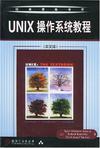UNIX操作系统教程
出版时间:2002-1 出版社:机械工业出版社 作者:Sarwar 页数:774
Tag标签:无
内容概要
The book is laced with many diagrams and tables, hundreds of in-chapter tutorials and interactive shell sessions, in--chapter exercises, and end-of chapter problems. A syntax box for every command, tool, and application covered describes the syntax of the command, its purpose, the output produced by the command, and its useful options and features. In addition, every chapter contains a summary of the material covered in the chapter.
书籍目录
Chapter 1 Overview of Operating Systems 1.1 Introduction 1.2 What Is an Operating System? 1.3 Operating System Services 1.4 Character Versus Graphical User Interfaces 1.5 Types of Operating Systems 1.6 The UNIX Family Summary ProblemsChapter 2 Brief History of the UNIX Operating System 2.1 Introduction 2.2 Historical Development of the UNIX Operating System 2.2.1 Beginnings 2.2.2 Research Operating System 2.2.3 AT&T System V 2.2.4 Berkely Software Distributions 2.2.5 The History of Shells 2.2.6 Current and Future Developments--LINUX 2.3 Variations in UNIX Systems Summary ProblemsChapter 3 Getting Started 3.1 Introduction 3.2 Computer System Hardware 3.2.1 Main/Primary storage 3.2.2 Central Processing Unit (CPU) 3.2.3 Disk 3.2.4 Bus 3.2.5 I/O Devices 3.3 UNIX Software Architecture 3.3.1 Device Driver Layer 3.3.2 The UNIX Kernel 3.3.3 The System Call Interface 3.3.4 Language Libraries 3.3.5 UNIX Shell 3.3.6 Applications 3.4 Logging On and Logging Off 3.5 Correcting Mistakes 3.6 Some Important System Setups 3.7 Some Useful Commands for the Beginner 3.7.1 Changing Your Password 3.7.2 Getting Help 3.7.3 Finding Out Who You Are and What the Name of Your UNIX System Is Summary ProblemsChapter 4 UNIX Shells 4.1 Introduction 4.2 Various UNIX Shells 4.2.1 Shell Programs 4.2.2 Which Shell Suits Your Needs? 4.2.3 Ways to Change Your Shell 4.2.4 Shell Start-up Files and Environment Variables 4.3 Some Other Useful General-Purpose Commands 4.3.1 Creating and Displaying Directories 4.3.2 Displaying Files 4.3.3 Printing Files 4.3.4 Displaying a Calendar 4.3.5 One-Way Real-Time Messaging 4.3.6 Notification of and Permission for Electronic Communication 4.3.7 Creating Pseudonyms for Commands 4.3.8 Displaying System Up Time 4.4 Shell Metacharacters Summary ProblemsChapter 5 Editing Text Files 5.1 Introduction 5.2 How to Do Short and Simple Edits by using the pico Editor 5.2.1 Creating the Text of an e-mail Message with the pico Text Editor 5.2.2 How to Start, Save a File, and Exit 5.2.3 General Keystroke Commands and Cursor Management 5.2.4 Cutting/Pasting and Searching 5.3 Obtaining More Control by Using the vi Editor 5.3.1 Shell Script File 5.3.2 How to Start, Save a File, and Exit 5.3.3 The Format of a vi Command and the Modes of Operation 5.3.4 Cursor Movement and Editing Commands 5.3.5 Yank and Put (Copy and Paste) and Substitute (Search and Replace) 5.3.6 Setting the vi Environment 5.3.7 Executing Shell Commands from Within vi 5.4 Getting the Maximum Control by Using the emacs Editor 5.4.1 DOS Aliases 5.4.2 How to Start, Save a File, and Exit 5.4.3 Cursor Movement and Editing Commands 5.4.4 Keyboard Macros 5.4.5 Cut or Copy and Paste and Search and Replace 5.5 Optional--How to Do Graphical Editing by Using emacs and the X Window System 5.5.1 Editing Data Files 5.5.2 How to Start, Save a File, and Exit 5.5.3 X Window emacs MenusChapter 6 Electronic MailChapter 7 Files and File System StructureChapter 8 File SecurityChapter 9 Basic File ProcessingChapter l0 Advanced File ProcessingChapter 11 File SharingChapter 12 Redirection and PipingChapter 13 ProcessesChapter 14 Networking and InternetworkingChapter 15 Introductory Bourne Shell ProgrammingChapter 16 Advanced Bourne Shell ProgrammingChapter 17 Introductory C Shell ProgrammingChapter 18 Advanced C Shell ProgrammingChapter 19 File System BackupChapter 20 Unix Tools for Software DevelopmentChapter 21 X Window System --The UNIX Graphical User InterfaceAppendix: Command DictionaryGlossaryIndex
图书封面
图书标签Tags
无
评论、评分、阅读与下载
